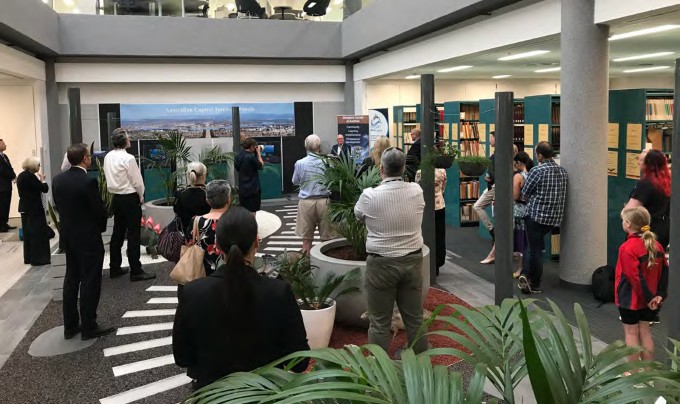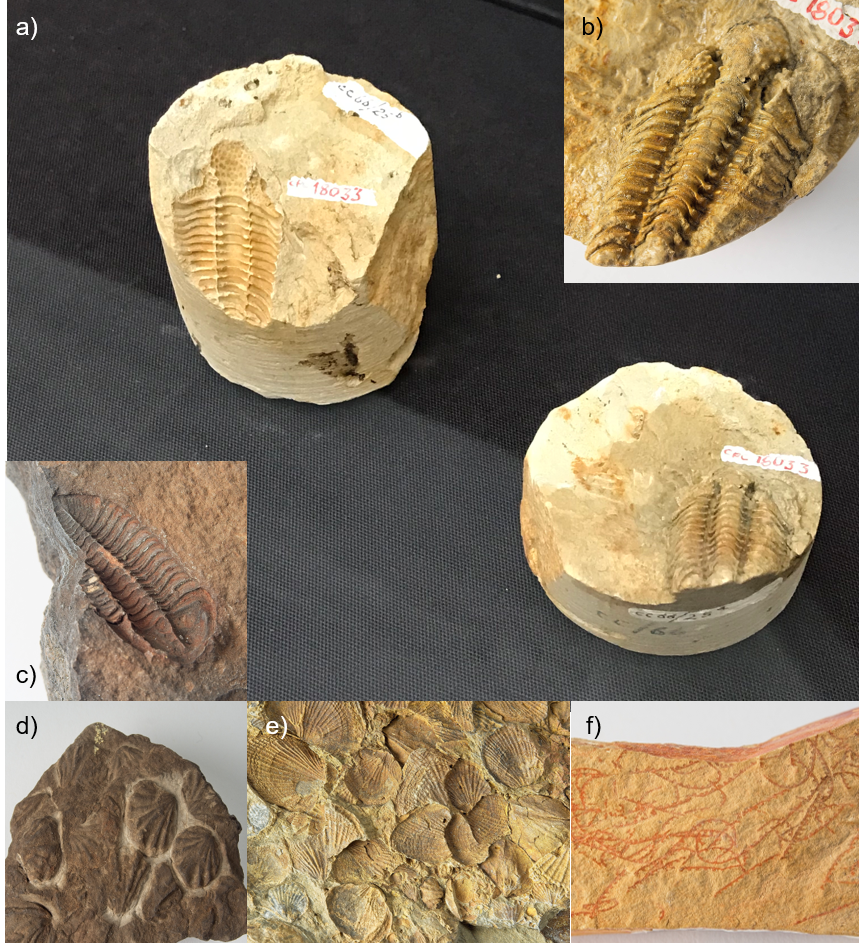
Author: Marita Bradshaw, NRG Steering Committee
Extract from National Rock Garden Newsletter No. 20, November 2020
The Australian Capital Territory has chosen its fossil emblem. It is Batocara mitchelli, a Silurian trilobite. This ancient marine arthropod won the popular vote against a strong field of other Palaeozoic invertebrates found in the ACT—two brachiopods, Retziella capricorniae and Atrypa duntroonensis, a graptolite, Monograptus exiguus, and another trilobite Apocalymene coppinsensis. An expert committee of geoscientists, palaeontologists, and science communicators selected these options and then online voting was open to Canberra residents for several weeks. More than a thousand people took the opportunity to consider the shortlisted fossils and learn more about life in the ancient seas that covered the nation’s capital around 430 million years ago. The result of the poll was announced on Wednesday 21 October by Minister Mick Gentleman at Geoscience Australia, and Batocara mitchelli was successful with around 30% of the votes.

Though trilobites have been extinct for around 250 million years they are one of the most familiar fossils with their characteristic three-lobed exoskeleton coming in a great variety of sizes, shapes and ornament, reflecting the diverse marine environments they occupied and their evolution over nearly 300 million years from the Cambrian to the Permian. With their eyes, multiple jointed legs for scuttling or swimming, and ability to roll up like a modern slater, trilobites just have more personality than the more sedentary shelly brachiopods and the enigmatic graptolite, a colonial filter feeder. No doubt, Apocalymene coppinsensis was also an engaging trilobite, but Batocara mitchelli is a worthy winner being the most common trilobite in the ACT and having distinctive knobby ornamentation on its head (cephalon) and tail (pygidium). A 3D model of the trilobite can be found at the weblink below, along with more detail about the other fossils and Canberra’s geology https://artsandculture.google.com/story/a-c-t- fossil-emblem/twKCTqZZczzjKA.

Batocara mitchelli has been found, along with corals and brachiopods, in the Silurian Canberra Formation. Limestone lenses (Canberra limestone or Acton limestone) within this unit occur along the Molonglo River and gave the Canberra region its early European name of ‘Limestone Plains’. Most of these limestones are now covered by the waters of Lake Burley Griffin, but there are fossiliferous outcrops near the National Museum of Australia on the Acton Peninsula and on the slopes of Mount Majura. A large fossiliferous specimen of the Canberra limestone can also be seen in the National Rock Garden, where it is the ACT’s representative in the Federation Rocks.
Only fragments of Batocara mitchelli are usually found, often just the heads and tails as trilobites shed their exoskeletons as they grow (much like modern day crabs), and the three-lobed skeletons easy disaggregate. However, an almost complete fossil was fortuitously intersected in drilling for the foundations of the Treasury Building in Parkes and this specimen of Batocara mitchelli is now proudly part of the Commonwealth Palaeontological Collection.
In the Silurian, Canberra was located near the convergent boundary of the Gondwanan continent and the global ocean of Panthalassa. What would become Australia was growing eastwards with the accretion of volcanic island arcs, continental slivers and thick sediment piles, and the intrusion of granite bodies from below. Selecting a trilobite as ACT’s fossil emblem reminds us that here we have preserved a patch of the ancient seabed and evidence of creatures that lived over 400 million years ago, putting us in touch with “deep time”. Batocara mitchelli now joins the ACT’s other emblems, it may not be as pretty as the Royal Bluebell, or as cute to some as the Southern Brush-tailed Rock-wallaby, but it is the most venerable and is certainly less noisy than the Gang-Gang Cockatoo.
Both Western Australia and New South Wales, have Devonian fish as their fossil emblems, Mcnamaraspis kaprios, the Gogo Fish from the Kimberley, and Mandageria fairfaxi, found at the Canowindra fossil site. South Australia has Spriggina from the world-famous Neoproterozoic Ediacaran fauna of the Flinders Ranges. This 550-million-year-old soft-body fossil is the first animal with a bilaterally symmetrical body. The posts of fossil emblem are still vacant for the other states and the Northern Territory, and for Australia. Perhaps an extinct marsupial from the Pleistocene megafauna would be suitable national fossil emblem, a Diprotodon or Thylacoleo (especially given the popularity of cats on social media)?
Explore the winning fossil and the other candidates from the comfort of your home through this online exhibition.
Those in Canberra may like to take the Australian Capital Territory fossil emblem rock and fossil self-guided tour.


